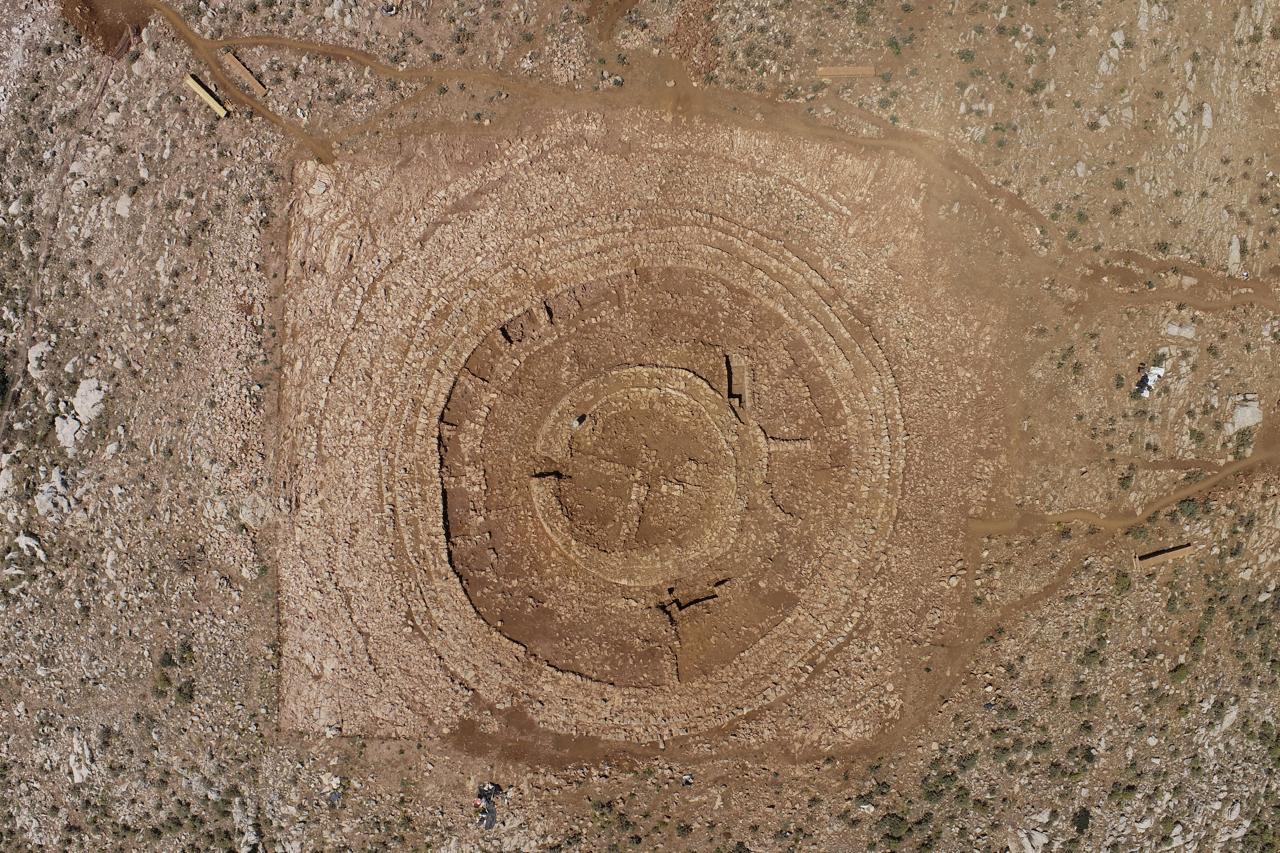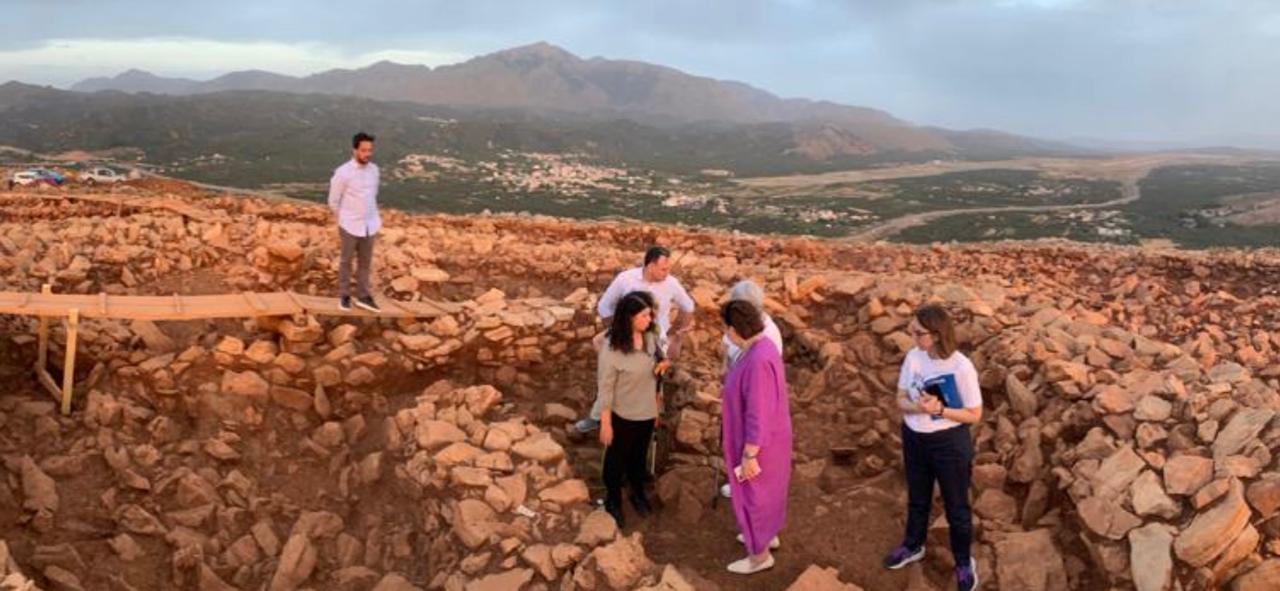Ongoing archaeology excavations in Crete have brought to light a unique Minoan architectural complex of circular shape with a diameter of approximately 48 meters, covering an area of about 1,800 square meters.
The discovery was made at the summit of the Papoura Hill northwest of the town of Kastelli, in the regional unit of Heraklion, in a section expropriated for the installation of Surveillance Systems (radar) of the new airport during archaeology digs.
The monumental structure consists of eight sequential stone-built rings, each with an average diameter of 1.40 meters and a maximum estimated preserved height of 1.7 meters, developed at different altitudinal levels.

These rings form a circular building (Zone A) at the center with a diameter of 15 meters and corbelled construction, with its interior divided into four quadrants. Zone A is surrounded by a second main zone where walls intersect the rings at lower levels, forming smaller spaces.
Experts place the main period of use between 2000-1700 BC, indicating it was likely founded just before or at the beginning of the Protopalatial period (MMI-II), while the presence of Neopalatial pottery in the destruction layer suggests that the monument continued to be used during the period of the new palaces.

The ongoing dig is gradually revealing a labyrinthine-like structure, as the rooms are interconnected with narrow openings. Two possible main entrances to the central zones have been revealed on the southwest and northwest sides of the site.
The fact that the construction is monumental and prominent likely indicates the significane of the site, as well as the extent of the population it would have served.


